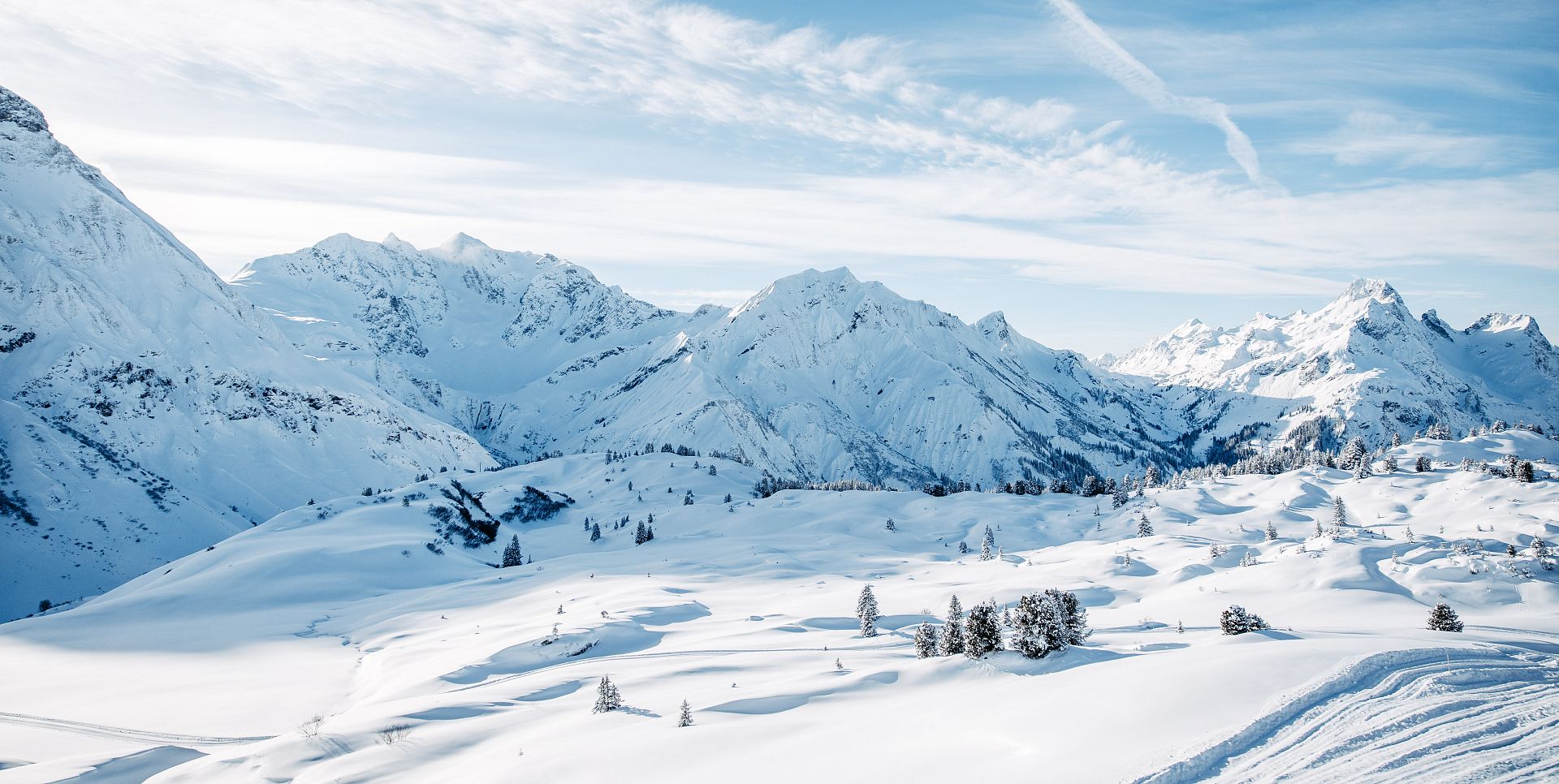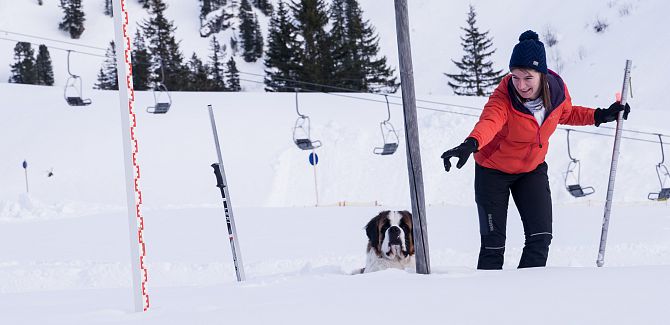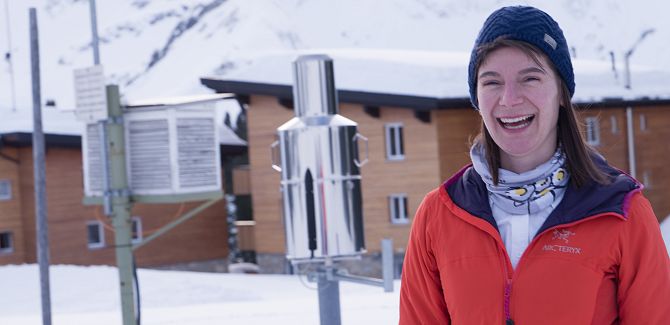
The snowiest ski resort in Europe.
How an Englishman turned Warth-Schröcken into Europe’s snowiest ski resort, why the Schlierenzauer family misses the snow every morning, and how three men ponder over snow crystals.
Snow science as a vocation.
It’s 06:30 in the morning, and the snow crunches under their feet: Ulrike Schlierenzauer leaves the Hotel Körbersee and heads to a marked snowfield. She has been assisting her father’s work for many years and now runs the snow station in his footsteps. Here, she measures the snow, observes wind and weather, records snow temperatures, and gauges the fresh snowfall. Her observations and measurements contribute to the daily avalanche report for the state of Vorarlberg—and her records accumulate into precise snow statistics for each winter. The record value of the past 40 years was noted by her father, Fritz Schlierenzauer, in the winter of 1998/99, when 16.50 metres of snow fell between November and the end of April. Even in the worst ski winter Ulrike can remember, 5.50 metres of snow fell. “We live with all this snow; a continuous snow cover for seven months is normal,” says Ulrike Schlierenzauer. She could never have imagined that her daily routine would help Warth-Schröcken gain worldwide fame as a ski resort.

The woman measuring the snow: Ulrike Schlierenzauer.
Snow brings fame and honour.
The English ski journalist and recognised expert on Alpine weather and snowfall patterns, Fraser Wilkin, conducted a comprehensive study across the entire Alpine region. He gathered long-term measurement data and statistics to identify the snowiest ski resorts in the Alps. His widely noted findings were published in November 2008 in the English newspaper Daily Mail. Since then, Warth-Schröcken has been regarded as the snowiest ski resort in the Alps. Wilkin calculated the long-term average at 10.70 metres of annual snowfall—a record figure that the neighbouring community of Lech am Arlberg almost reaches (10.40 m). The top five snowiest resorts are completed by Braunwald (9 m) in Switzerland, Obertauern (8.80 m) in Austria, and Avoriaz (7.80 m) in France.
Fraser Wilkin.
Fraser Wilkin’s article in the English Daily Mail, published in 2008, earned Warth-Schröcken the title “Europe’s snowiest ski resort.”
When the north brings snow—lots of snow.
The results do not surprise the Schlierenzauer family. They know the geographical and meteorological background well: the phenomenon of the north-facing barrier (Nordstaulage) brings massive snowfall to the region in winter, making the term “snow-sure” almost an understatement. In particular, winter events over the Atlantic dictate the weather in Europe. Moist air masses typically move from the north or northwest towards the Alps and hit the first significant obstacle in the Arlberg region, where the heavy clouds release their snow. Skiers benefit from this, enjoying excellent snow conditions well into spring thanks to the resort’s altitude and the numerous north- and east-facing slopes.

Mother Holle’s earthly helpers.
“We get most of our snow in March and April,” says the Schlierenzauer family. That’s why the staff at Skilifte Warth focus on the art of snowmaking, especially in the pre-Christmas period. This past summer, one of the most modern snowmaking systems in the Alps was installed, ensuring perfect conditions on Warth’s twelve main slopes from the very first day of the ski season.
“Our snow is made from water from the Hochalpsee and air,” explains Markus Lorenz, operations manager at Skilifte Warth. Together with Florian Huber and Reinhold Bickel, he is responsible for snow production and works around the clock to guarantee the highest quality. By mixing compressed air in so-called nucleator nozzles, an air-water mixture is created, forming crystal nuclei. Fine water droplets then accumulate on these nuclei, forming snow crystals on their way to the ground.
“The better you know your machine, the better the result. Snowmaking is an art that requires experience and teamwork to ensure consistent quality across the slopes. Although the entire snow system is computer-controlled, we still patrol the mountain at night on snowmobiles to check the terrain and guarantee optimal snow quality,” says Lorenz. “We simply owe it to the resort’s reputation as a snow guarantee,” add the other two snow experts.
The Schlierenzauer family wholeheartedly agrees—based on years of experience, they know: every winter brings snow. Lots of snow.